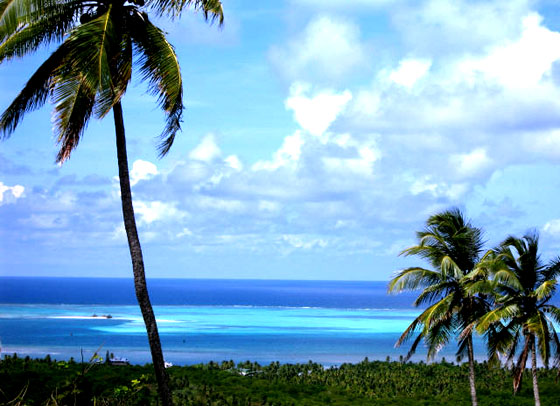Air Temperatures – The following maximum temperatures were recorded across the state of Hawaii Monday:
Lihue, Kauai – 78
Honolulu airport, Oahu – 77
Molokai airport – 78
Kahului airport, Maui – 84
Kona airport, Hawaii – 84
Hilo airport, Hawaii – 83
Air Temperatures ranged between these warmest and coolest spots near sea level – and on the highest mountain tops around the state…as of 530am Tuesday morning:
Kailua Kona – 75
Molokai airport – 62
Haleakala Summit – 41 (near 10,000 feet on Maui)
Mauna Kea Summit – 32 (13,000+ feet on the Big Island)
Hawaii’s Mountains – Here’s a link to the live web cam on the summit of near 13,800 foot Mauna Kea on the Big Island of Hawaii. This web cam is available during the daylight hours here in the islands…and when there’s a big moon shining down during the night at times. Plus, during the nights you will be able to see stars, and the sunrise and sunset too…depending upon weather conditions. Here's the Haleakala Crater webcam on Maui – if it's working.
Tropical Cyclone activity in the eastern and central Pacific – Here’s the latest weather information coming out of the National Hurricane Center, covering the eastern north Pacific. You can find the latest tropical cyclone information for the central north Pacific (where Hawaii is located) by clicking on this link to the Central Pacific Hurricane Center. A satellite image, which shows the entire ocean area between Hawaii and the Mexican coast…can be found here. The 2012 hurricane season is over in the eastern and central Pacific…resuming on May 15th and June 1st 2013.
Aloha Paragraphs

One more day before the trade winds return…
with improving weather
~~~537am HST Tuesday morning: mostly clear, voggy,
calm at my upcountry Kula, Maui weather tower,
the air temperature was 54.7F degrees~~~
The following numbers represent the most recent top wind gusts (mph), along with directions as of Monday evening:
10 Mana, Kauai – NNW
18 Makua Range, Oahu – ENE
08 Molokai – NE
15 Kahoolawe – SW
15 Hana, Maui – SE
30 PTA Range 17, Big Island – NW
Here are the latest 24-hour precipitation totals (inches) for each of the islands as of Monday evening:
0.22 Waialae, Kauai
1.06 Poamoho RG 1, Oahu
0.00 Molokai
0.00 Kahoolawe
0.01 Kaupo Gap, Maui
0.00 Big Island
We can use the following links to see what’s going on in our area of the north central Pacific Ocean. Here's the latest NOAA satellite picture – the latest looping satellite image…and finally the latest looping radar image for the Hawaiian Islands.
~~~ Hawaii Weather Narrative ~~~
The cold front, although now stalled near Kauai, has brought showers to Oahu today…gradually shifting back towards Kauai tonight into Tuesday. Here's a weather chart showing a near 1036 millibar high pressure system, located far to the north-northeast of the islands. This high pressure cell has an associated ridge of high pressure, extending south and southwest to near the Big Island and Maui. At the same time, there's a near 1017 millibar high pressure system not far to the north of Kauai. Finally, the recent cold front is stationary near Kauai and Oahu. Winds will blow from the south to southeast for the time being…keeping voggy weather in place locally.
Satellite imagery shows lots of clouds, over and around the Hawaiian Islands…many of which are the high cirrus variety. We can see what's left of the cold front over the western islands. At the time of this writing, there was also an area of towering cumulus well off offshore, to the northeast of Oahu. As far as precipitation goes, the showers that have fallen over and around Oahu Monday, will gradually shift back to the northwest…over Kauai into Tuesday. Otherwise, as the trade winds return over the next day or two, off and on showers will begin falling along our windward sides statewide.
The winds will be from the south to southeast, due to the continued proximity of the stalled cold front over the western islands. Volcanic haze (vog) continues to move up from the Big Island vents, over Maui County, and locally elsewhere…keeping the hazy conditions in place. As the winds remain generally quite light over the day or two, there will be afternoon cloud buildups around the mountains, leading to a few localized showers. The moisture axis associated with the slowly decaying cold front, will keep the most generous shower activity over the western islands through Tuesday. As the trades arrive around mid-week, more favorable weather conditions will return across the entire state. Those trades will also shift whatever showers that are around, back over to the windward sides. Looking a bit further ahead, as a disturbance aloft develops over the islands, there may be increasing windward showers by the weekend. ~~~ I'll be back again with your next new weather narrative early Tuesday morning, I hope you have a great Monday night wherever you happen to be spending it! Aloha for now…Glenn.
World-wide tropical cyclone activity:
Atlantic Ocean/Caribbean Sea: There are no active tropical cyclones
Gulf of Mexico: There are no active tropical cyclones
Eastern Pacific Ocean: There are no active tropical cyclones
Central Pacific Ocean: There are no active tropical cyclones
Western Pacific Ocean: There are no active tropical cyclones
South Pacific Ocean: There are no active tropical cyclones
North and South Indian Oceans: Tropical cyclone 21S (Imelda) remains active in the south Indian Ocean, located approximately 410 NM east of La Reunion island in the South Indian Ocean. TC 21S has 35 knot sustained winds, with gusts to near 45 knots. Here's the Joint Typhoon Warning Center (JTWC) graphical track map, along with a satellite image. Final Warning
Interesting: There's plenty of evidence that the climate has warmed up over the past century, and climate scientists know this has happened throughout the history of the planet. But they want to know more about how this warming is different. Now a research team says it has some new answers.
It has put together a record of global temperatures going back to the end of the last ice age — about 11,000 years ago — when mammoths and saber-tooth cats roamed the planet. The study confirms that what we're seeing now is unprecedented. What the researchers did is peer into the past.
They read ice cores from polar regions that show what temperatures were like over hundreds of thousands of years. But those only reveal changes in those specific regions; cores aren't so good at depicting what happened to the whole planet.
Tree rings give a more global record of temperatures, but only back about 2,000 years. Shaun Marcott, a geologist at Oregon State University, says "global temperatures are warmer than about 75 percent of anything we've seen over the last 11,000 years or so."
The other way to look at that is, 25 percent of the time since the last ice age, it's been warmer than now. You might think, so what's to worry about? But Marcott says the record shows just how unusual our current warming is.
"It's really the rates of change here that's amazing and atypical," he says. Essentially, it's warming up superfast. Here's what happened. After the end of the ice age, the planet got warmer. Then, 5,000 years ago, it started to get cooler — but really slowly. In all, it cooled 1.3 degrees Fahrenheit, up until the last century or so.
Then it flipped again — global average temperature shot up. "Temperatures now have gone from that cold period to the warm period in just 100 years," Marcott says. So it's taken just 100 years for the average temperature to change by 1.3 degrees, when it took 5,000 years to do that before.
The research team tracked temperature by studying chemicals in the shells of tiny, fossilized sea creatures called foraminifera. Their temperature record matches other techniques that look back 2,000 years, which supports the validity of their much longer record.
Climate scientists predict that the current warming will continue, given the amount of greenhouse gases going up into the atmosphere. "The climate changes to come are going to be larger than anything that human civilization and agriculture has seen in its entire existence," says Gavin Schmidt, a climate researcher at NASA's Goddard Institute for Space Studies. "And that is quite a sobering thought."












 Email Glenn James:
Email Glenn James:
Judy Says:
Ths., Glenn.
The more details on vog, the better. This problem becomes a particularly large bear when cane-burning coincides.
What to do? Where to go? How-to's could help.
J.~~~Hi Judy, yes, I agree the vog has been a bear lately. What to do? I personally discontinue my fast four mile daily walks during the voggy periods, not much else. Where to go? I suppose if you lived in one of those areas on the Big Island, that have long lasting periods of vog, one could start thinking about moving away. Otherwise, trust that the atmospheric clearing trade winds will return soon, and whisk this voggy air downstream of the islands…and away. Aloha, Glenn
DS Says:
Welcome back home Glenn! I've never missed as much someone I don't even know! I felt I was in a weather 'black out' while you were gone-could not find any detailed weather info on the Internet. Loved your diary of your trip, I am quite familiar with all the places you traveled so it was good to hear about the weather there! We've had an unusually long period of strong winds from the east, southeast for about three weeks now here on the Hamakua Coast of the BI-what's up with that? Getting way sick of it-trying to work in the garden is a pain with all this wind. ~~~Hi DS, nice to hear your flattering comments! I’m glad you enjoyed my travelogue as well, it is fun to share my adventures. As for that wind down on the Hamakua coast of the Big Island, it should straighten up by mid-week…with the trades returning through the rest of the week. Good luck with your outside work in the garden. Aloha, Glenn